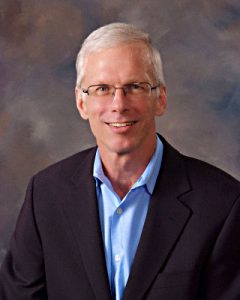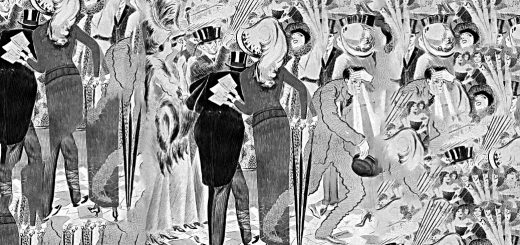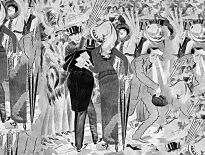Tom Claugus – A Change of Plans

Today’s post is a profile of Guru investor Tom Claugus, who appears in Jack Schwager’s book Hedge Fund Market Wizards. His chapter is called A Change of Plans.
Contents
Tom Claugus
Thomas Claugus graduated in chemical engineering, took an MBA, and spent 15 years working his way up the corporate ladder.
But he had been interested in the stock market since he was a child (his father bought stocks), and had been investing two-thirds of his income for years.
When he was earning more from stocks than from being a chemicals executive, he gave up work to become a portfolio manager.
Claugus appears in Jack Schwager’s book Hedge Fund Market Wizards.
- His chapter is called A Change of Plans.
Performance
Claugus’ public account ($5 bn hedge fund GMT) has returned 17% pa over 19 years.
- His private account returned 33% pa in the seven years prior to that.
He has five down years out of 26, with two of them at only a 3% loss.
- The bad years were 1991 (down 12%), 2008 (down 25%) and 2011 (down 9%).
Claugus is a contrarian, which means he often lags the market when things are going well, but makes up in a downturn.
- He usually has a good year after having had a bad one (eg. up 56% in 2009).
He had a small loss in 1999 (when the S&P 500 was up 21%), but then made a lot of money during the bear market from 2000 to 2002.
- But of course, he went down with everyone else in 2008.
Early years
My father was a product of the Depression, and he was scared to death of being poor again. Somehow he transferred that insecurity to me. From a very early age, I knew I wanted to be financially independent.
When I was a freshman in college, I put together a 30-year financial plan outlining how I could save and invest my money. By saving two-thirds of my income and earning 10 percent a year on my investments, I could be a millionaire by the time I was 53. (( I did something very similar myself ))
Shorting
Shorts are actually easier to find than longs. It is easier to spot a broken company than a good company. It is easier to identify bad management than good management.
I have people tell me all the time that I should short stocks after they break. All I can tell you is that if you didn’t short the stock when it was 80, psychologically, it is very difficult to sell it when it’s 50.
In 1986, I became concerned that the market was overpriced. I knew I didn’t have the discipline to stay out of the market, and I felt that stocks were too expensive, so I started shorting.
In the summer of 1987 I was losing so much money that I had to call my mother to get a loan to meet the margin call. There is no way my dad would have loaned me the money.
As the market was crashing [in October 1987], I thought I could start putting on some longs to reduce my net short position. Most of the stocks I was short were low quality, so instead of covering shorts, I started buying stocks that I really liked.
I have always tried to be long and short in things that I really believed in for the longer term.
1987 was the first year I made more money in the market than I did in my job. Every very year after that, I made more money in the market than in my job.
Switching careers
If you had asked me a year before I left Rohm & Haas whether I would ever leave, I would have told you that I was there for the duration. My aspiration was to be CEO of Rohm & Haas.
My net worth reached $1.6 million. I thought, 3 percent of $1.6 million is $48,000; I could live on that. All of a sudden, the economic necessity to keep on working went away.
The realization that I had the economic freedom to sustain a business turned me upside down. I spent a year in terrible turmoil.
I started a hedge fund in 1990 with $3 million; part of it was mine, and the rest was from friends and family. I was to managing a portfolio by myself out of my home. I felt a very low sense of self-worth. I missed my friends.
I was up in the first six months, but then I started giving money back. I think I was still up a little bit when I started to seriously question my decision to manage a fund.
The responsibility of having other people’s money really weighed on me. If you have a 10-year time horizon, you can make good decisions and make a lot of money. But if you have only a three-month time horizon, anything can happen.
I closed [the fund] at the end of the first year.
Claugus planned to go back to the chemical firm, but they offered him a job in Asia.
I walked out to put the for sale sign in front of my house, and I just couldn’t do it. I was giving up on my dream.
He became depressed and was treated by a psychiatrist. Eighteen months later he started a second hedge fund.
Trading style
I am a reversion-to-the-mean thinker. We use standard deviation bands to define extreme readings.You would have your maximum long position at the lower band and your maximum short position at the upper band.
This sounds like Bollinger Bands, but these are short-term indicators. According to Schwager:
Claugus derives the best-fit regression line for the log of prices using all data back to 1932 and then calculates the 95% confidence interval – the two equidistant lines parallel to the best-fit line that encompass 95% of all the months.
Claugus uses the S&P 500, the Nasdaq and the Russell 2000 indices to get a composite signal.
Back to Claugus:
At the lower band, we would be 130% long and 20% short. At the midpoint, we would be 100% long and 50% short.
We are 50% net long rather than neutral because of the long-term secular uptrend in stock prices. At the upper band, we would be 90% short and 20% long, or 70% net short.
But obviously, there are times where you can stay beyond the bands for a long period. That’s where we will lose money.
After determining the portfolio net exposure, we do a similar analysis by sector, trying to identify sectors that are cheap and sectors that are expensive.
The relative valuations are only a guideline. Brazil may show up as being expensive, but the fundamentals are very good, so I don’t want to be short.
The next part is figuring out why a sector or stock is expensive or cheap, and do we see something that is going to change that? That is where we spend 90 percent of our time.
I look for anomalies. I look for quarterly earnings that are up more than 50% or down more than 30%.
I have what I call my Evel Knievel screen. These are companies that are trying to jump the Grand Canyon and probably won’t make it. There are only two conditions for the screen.
First, the company is trading at more than five times book value. Second, the company is losing money. My job is to figure out which stocks won’t make it across the Grand Canyon and then go short those stocks.
Risk control
For many people, risk control means that they have a plan for what they will do if something goes very wrong. I try to avoid getting into that situation in the first place.
A survival threat is being down more than 7% in a month and not knowing why. Ninety percent of our monthly returns are between +7% and -7%. If I can’t figure out what is wrong, then I have to reduce the exposure.
The number one risk factor for me is leverage. Our net exposure is usually less than that of a typical mutual fund.
Outcomes
Just because you made money doesn’t mean you were right, and just because you lost money doesn’t mean you were wrong. It is all a matter of probabilities.
A big mistake investors make is that they judge whether a decision was right based solely on the outcome. There is a lot of randomness in the outcome. The same set of conditions can lead to different outcomes.
Whether a trading decision was right or wrong is not a matter of whether you won or lost, but rather whether you would make the same decision all over again if faced with the same facts.
Stock picking
The general principle is that we look for future revenue generation that can be reasonably anticipated but that is not reflected by the current market price. This idea is probably the single most important concept in our stock selection process.
The source of the improvement can be new production, new technology, or an expected increase in asset values.
Claugus says that if a revenue source is more than a year away, the market will often fail to attach any value to it.
He also touched on stock behaviour during crashes and recoveries:
When the market sells off really hard, it is usually a matter of liquidity. There’s no place to hide; people sell everything because they have to, not because they want to.
The reverse rarely happens on the upside. People don’t run out and buy everything. There are always some stocks that are going down.
Macro
We track a number of basic indicators to get a feel for the real economy: rail traffic, truck traffic, load factors on airlines, RevPAR [revenue per available room] for hotels, construction and housing starts.
But if you look at the budget and trade deficits and government spending, the situation is out of control. We clearly need to rein in government spending, and when that happens, it is likely to slow the economy.
The Western world has a huge debt problem and is managing it very poorly.
Conclusions
Claugus is yet another guru that I hadn’t heard of before his interview, which I really enjoyed.
Schwager says the key lesson here is:
Vary exposure based on opportunity.
Sounds good to me, and Claugus was pretty open about how he sizes overall exposure.
Another key takeaway is not to judge decisions on their outcomes.
- You can be right for the wrong reasons, and unlucky even if you did everything right.
- You need to stick with your system.
I also liked the look of Claugus’s Even Knievel stock screen, and I might try to build something similar in the future.
Until next time.


















